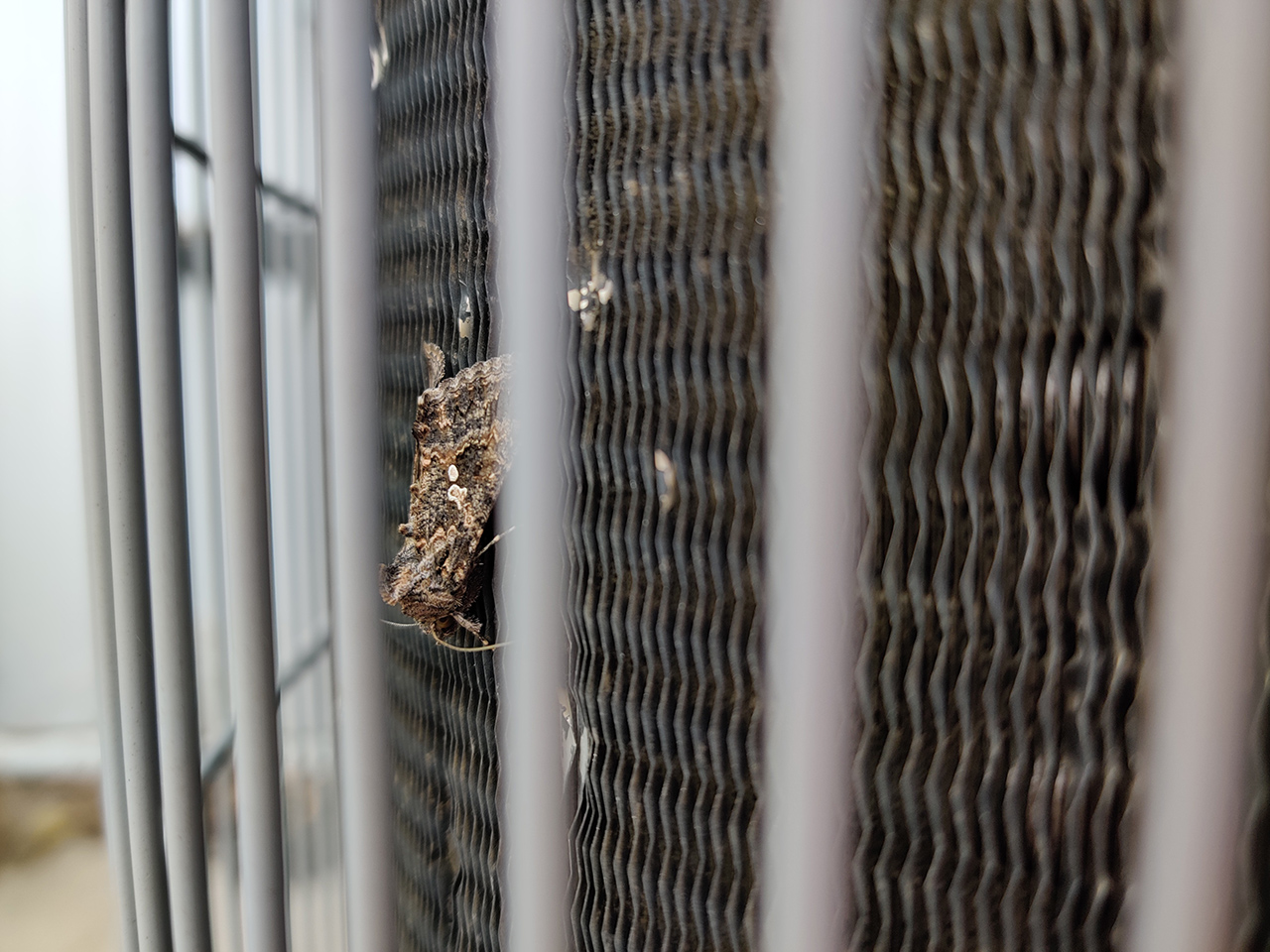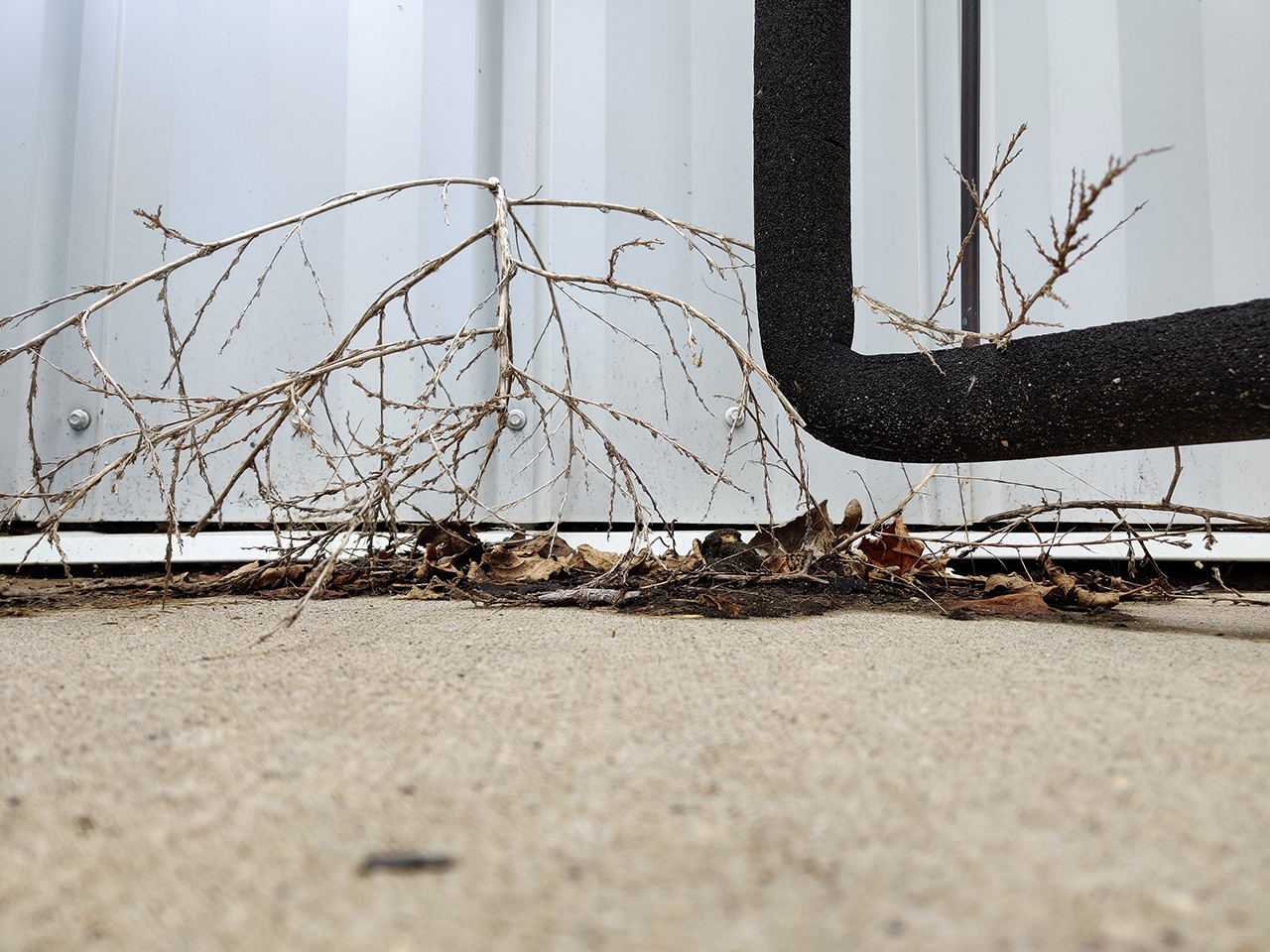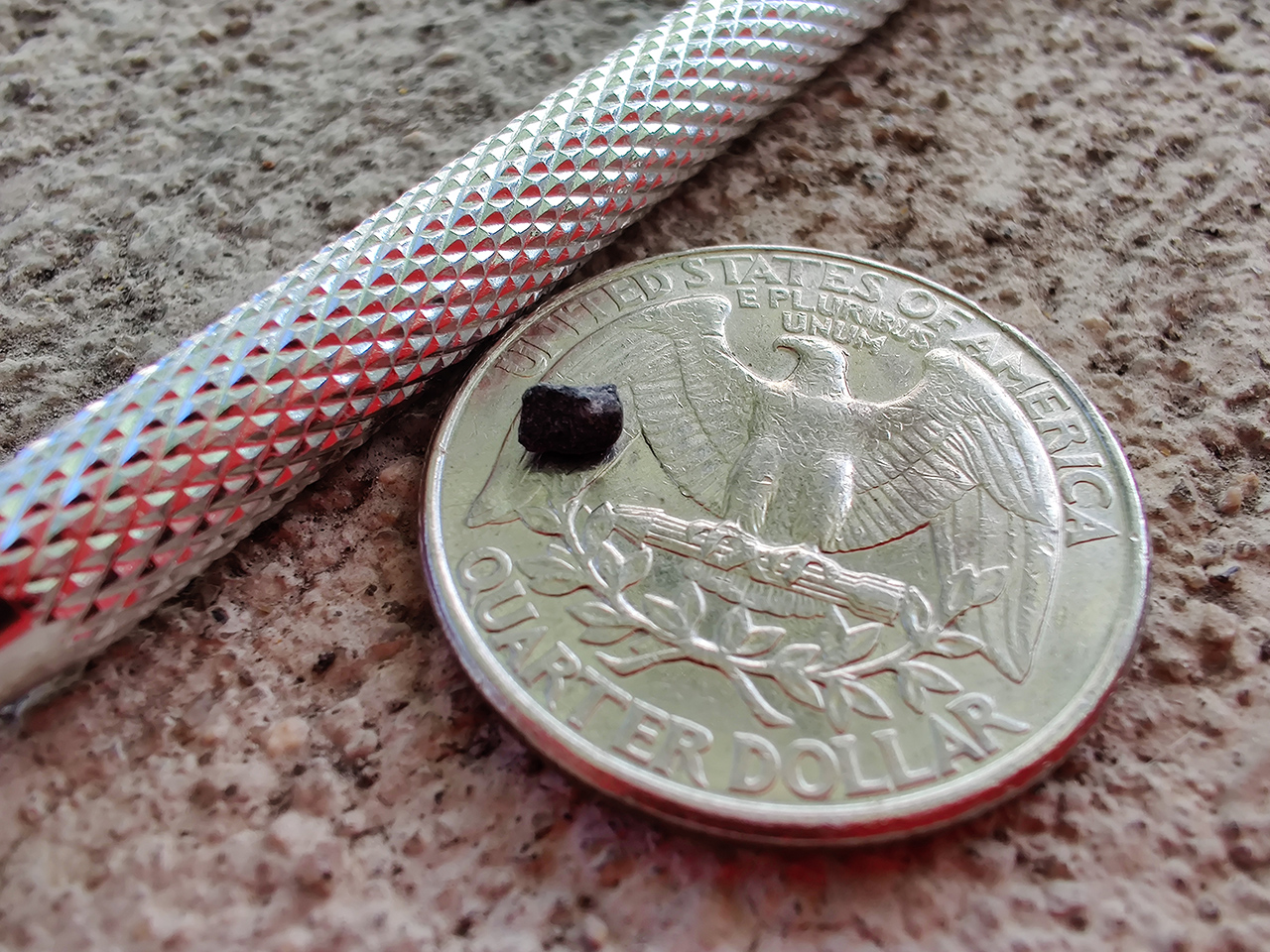OnePlus 7T Review: Even Better
- Light yet premium hardware
- Vastly better loundspeaker VS 6T
- High quality curated custom UI
- Significantly improved backside cameras vs 6T
- Design identity reboot on-point
- Pretty sure the headphone jack is gone for good
- No wireless charging
- Display notch (for camera) like 6T and 7 (non-pro)
The OnePlus 7T is essentially the OnePlus 7 Pro with a few key details changed, just a smidgen. Today we're taking a peek at how well the OnePlus 7T stands up to the OnePlus 7 Pro as well as the rest of the market. This phone launches for approximately $600 (around $50 more than the base cost of its predecessor, the OnePlus 6T released one year ago.) We'll see where those extra few ten-dollar-bills went, and we'll give a final verdict before this whole thing is through.
The OnePlus phone market right now
When this device is released, it'll be one of two OnePlus smartphones released in the USA in the year 2019. Earlier this year they released their OnePlus 7 and OnePlus 7 Pro, but only the Pro was made available to the USA. The differences are relatively small between the OnePlus 6T (last year's best OnePlus smartphone) and the OnePlus 7, but significant between 6T and 7 Pro.
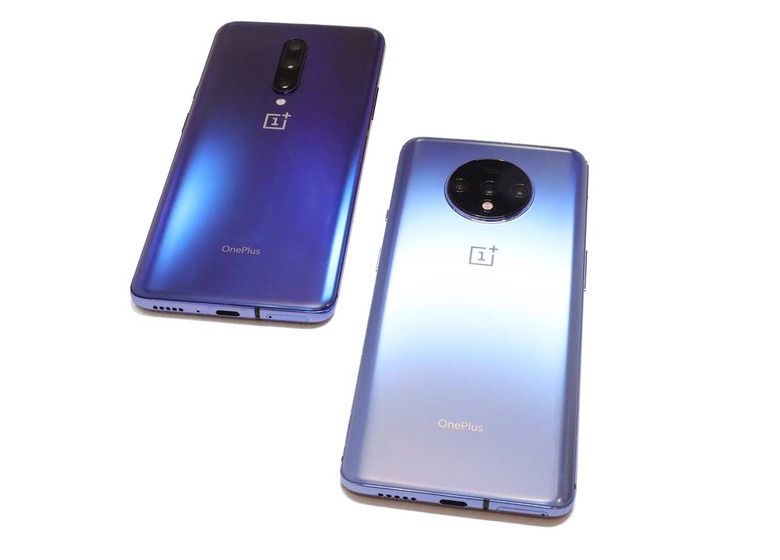
OnePlus split their release to make the most of the various markets in which it sells phones. In the USA, it made the most sense to release ONLY the OnePlus 7 Pro earlier this year because they'd then have the 6T and the 7 Pro for sale – standard and premium. With the release of the 7T, they advance their offerings a bit more while maintaining their 2-phone lineup with one standard phone, one premium phone.
They also continue to roll with the latest Qualcomm Snapdragon mobile chipset. With the OnePlus 7 Pro, they had the Snapdragon 855. Now they have the Snapdragon 855+ (Plus) in the 7T. The differences between these processors is far less significant than the public perception that OnePlus always has a phone with the newest processor on the market. It's all about perception of value – and cameras, of course. And displays, and every other tiny detail.
OnePlus Display Evolution
If you look to the OnePlus 7 Pro and the OnePlus 7 (non-pro) you see what we'd traditionally expect from a lesser and greater display. The less expensive device has the display that's lesser, the more expensive the better. But with the OnePlus 7 Pro VS the OnePlus 7T, we've got something different.
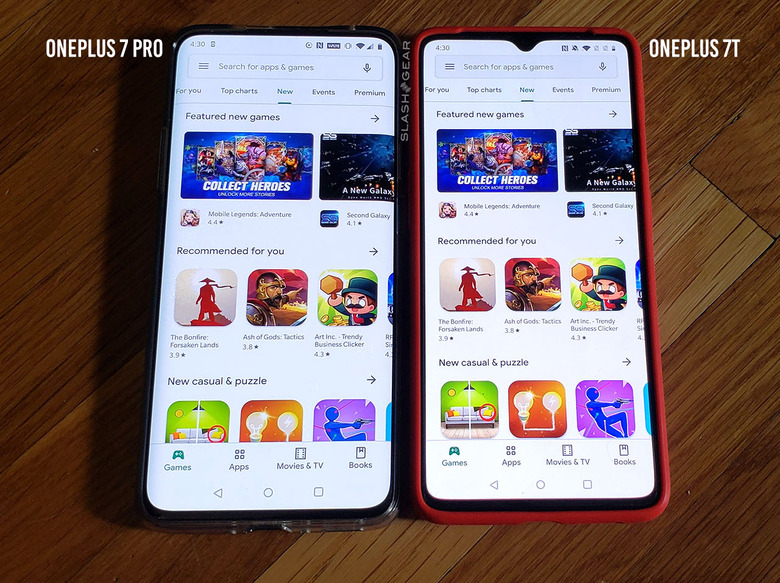
The OnePlus 7 Pro has a larger display, with more pixels, and no notch. We expected this, as the OnePlus 7T is the less expensive device. But though OnePlus 7T's display is smaller and has a notch, it's brighter than the panel on the 7 Pro. OnePlus says the place we'd notice this most is in direct sunlight, where the OnePlus 7T would be 27% brighter than the OnePlus 7 Pro.
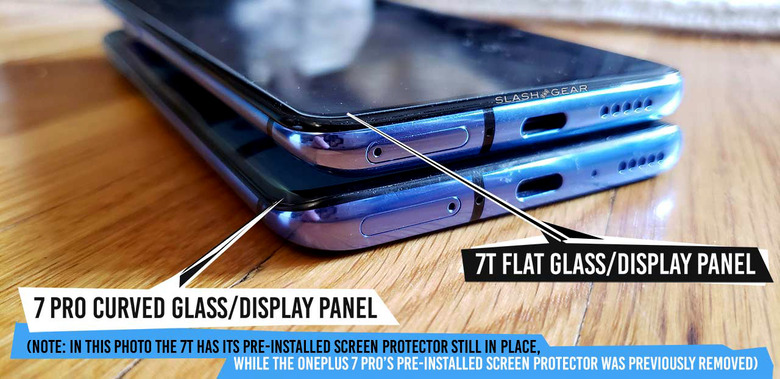
Both devices have the same 90Hz image refresh rate, so we're still playing games and scrolling through screens with the same amount of fluidity. Both displays look and feel like contenders for best smartphone display on the market at their price tier, without a doubt.
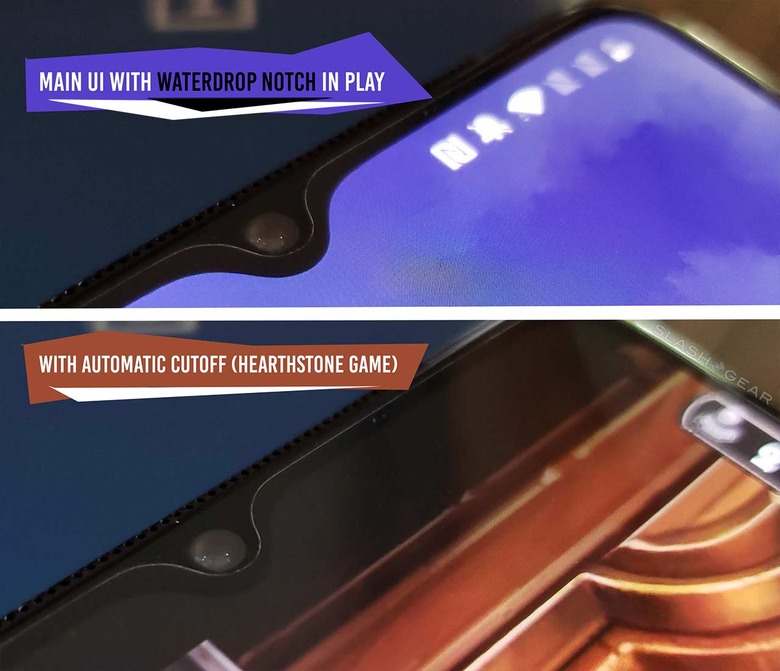
Much like what we saw with the notch on the OnePlus 6T, this phone's notch doesn't automatically dip into every screen. Default is to black out the area in which the notch resides. The transition from full screen (with notch dipping into active display) to cut-off screen for apps like Hearthstone is as natural as opening any other standard app – AKA not a big deal.
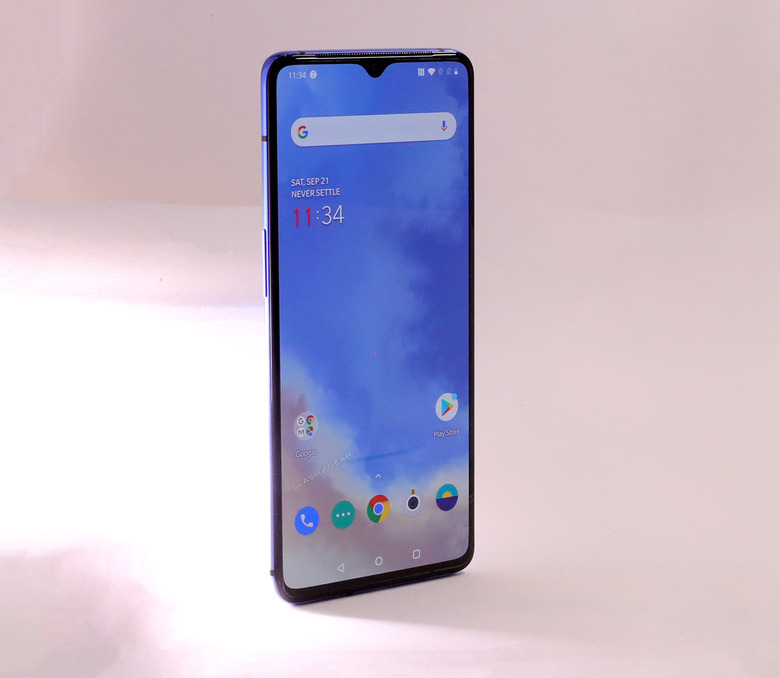
The display on this device has fewer pixels than that of a Samsung Galaxy S10 or Note 10, and a lower pixels-per-inch density of either phone family. But as OnePlus seems to have proven over the past several years of persistence with a FHD (1080p) or slight variations therein, they've got a display that's plenty sharp enough. Was that 2012 report on post-720p displays right all along?
Oxygen OS, Android 10, Custom/Curated UI
Some of these improvements are specific to the move to the newest version of Oxygen OS, the OnePlus OS based on Android 10. Most of these features are also available on the OnePlus 7 Pro now that the phone has its official public-release update to the latest version of Oxygen OS based on Android 10.
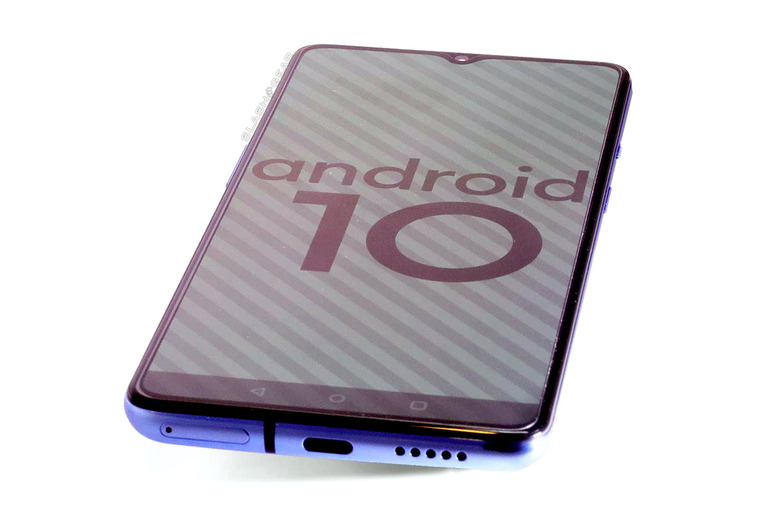
OnePlus' Oxygen OS provides a curated set of themes, with one light and two dark modes, all three of which are usable and nonintrusive. The user can select their preferred accent color and the animation that appears when opening the device with its in-display fingerprint reader.
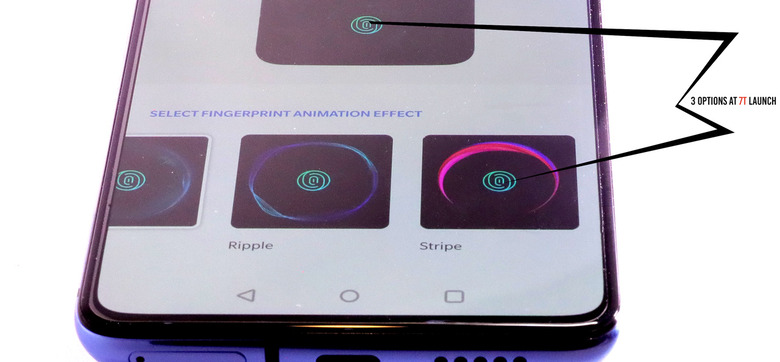
Above you'll see the in-display fingerprint reader animation selection screen. This is one of a variety of curated UI sets available on the OnePlus 7T right out the gate. Below you'll see the current OnePlus Camera app interface.
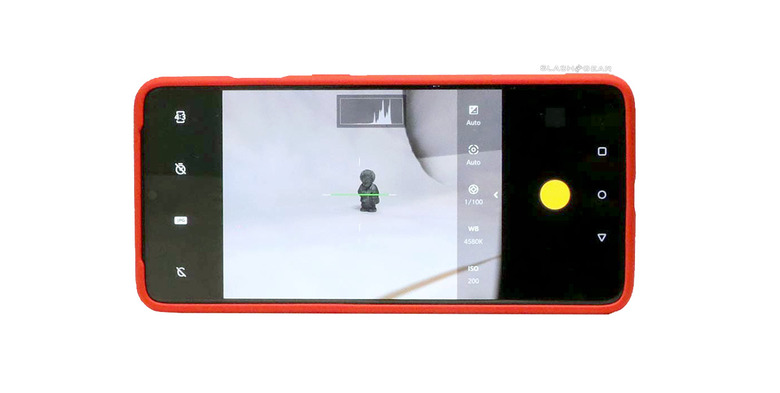
This is the first device on the market with Android 10 out-of-box – so claimed OnePlus. It certainly appears so – though there are other devices out in the wild with Android 10 first, they were not the first to be sold with Android 10 pre-installed.
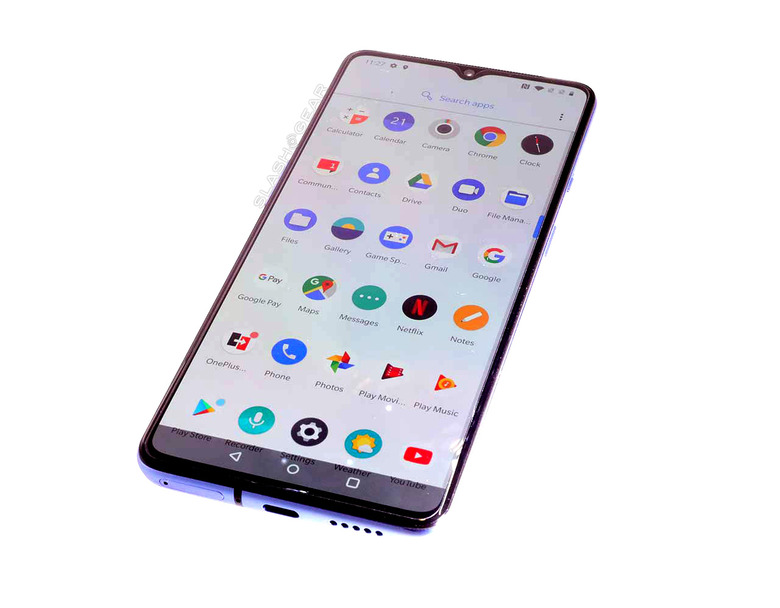
Above you'll see the entirety of the apps included with this smartphone at launch – OnePlus adds only adds a few apps, and none of said apps are what we'd consider bloatware. The OnePlus implementation of Android continues to keep it simple, adding their own customizations and enhancements while they keep the bulk of Google's original work.
Audio/Speakers
This device rolls with stereo speakers with officially-branded Dolby Atmos sound enhancements. In the phone's audio settings are three choices for "Scenario-Based Enhancement" for Dolby Atmos sound, including Dynamic (adjusts based on content automatically), Movie ("realistic surround-sound and clear dialogue"), and Music. This system also has "Earphone Adjustment" when the phone detects that you're connected to headphones/earbuds.
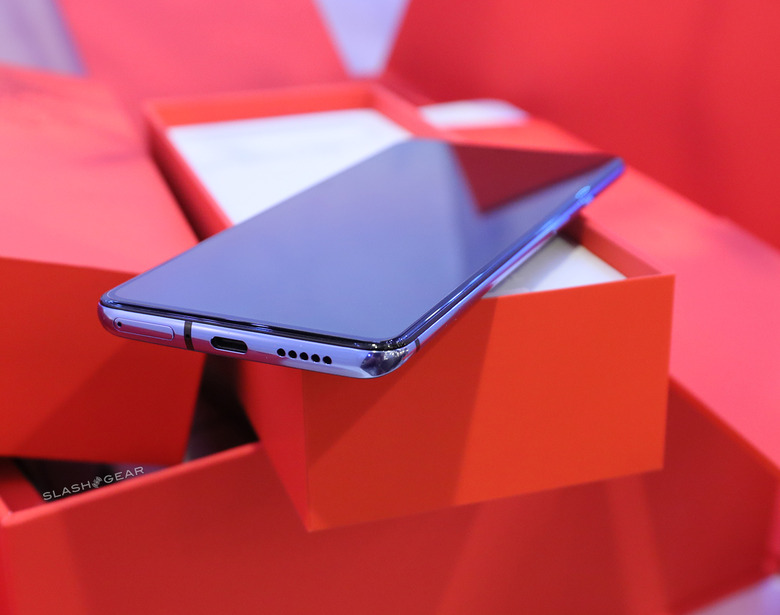
Also in the mix is Auto Play for automatic continuation of music when earphones are connected, Smart Answer for Bluetooth, "Speak Caller ID", and Notification ringtone in earphones. Bluetooth absolute volume (autosync volume) is also automatically enabled for Bluetooth connections.
Vibration Motor / Haptic Feedback
If there is a difference in vibration motors (haptic feedback) between the OnePlus 7 Pro and the OnePlus 7T, said difference is not significant. I would not be shocked to find that they're using the exact same hardware for touch vibration.
OnePlus suggests that this device is "upgraded with an independent haptic driver" and that it's "more powerful, accurate, and satisfying." Compared to the OnePlus 6 and/or 6T (and previous OnePlus phones), the haptic vibration in the OnePlus 7T has improved a significant amount.
OnePlus 7T Camera
The front facing camera on the 7T is the same as it was with the OnePlus 6T. The bezel area (the notch, that is) got a bit slimmer this time around, but it's basically the same front-facing camera as we've used with the 6T.
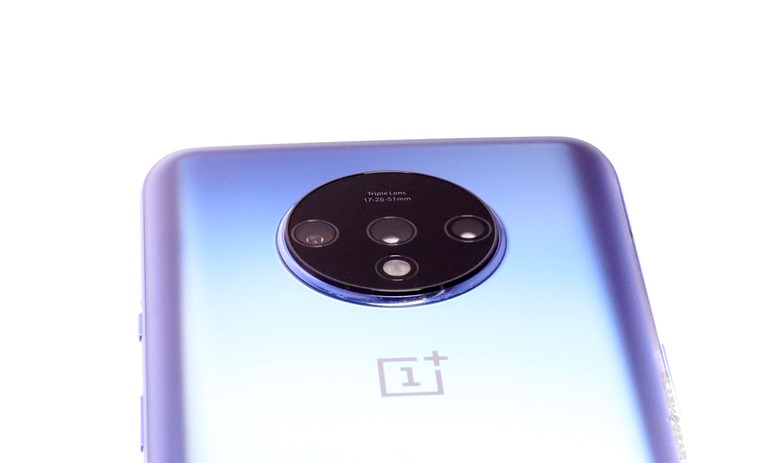
The most major change in hardware on the backside camera array from the 7 Pro to the 7T is in macro photography. This new device is now able to focus as close as 2.5cm from its intended subject. When it comes to photographs of bugs, bolts, and money, this added closeness makes all the difference.

We've still got the same 48MP sensor for the main camera as the 7 Pro. The 7T has the same Sony IMX586 sensor with 0.8um pixels at 48MP, or 1.6um pixels (each 1 big pixel is the result of 4 small pixels) for 12MP photos. This main camera has OIS and EIS and uses all three cameras for some super stabilization in videos.
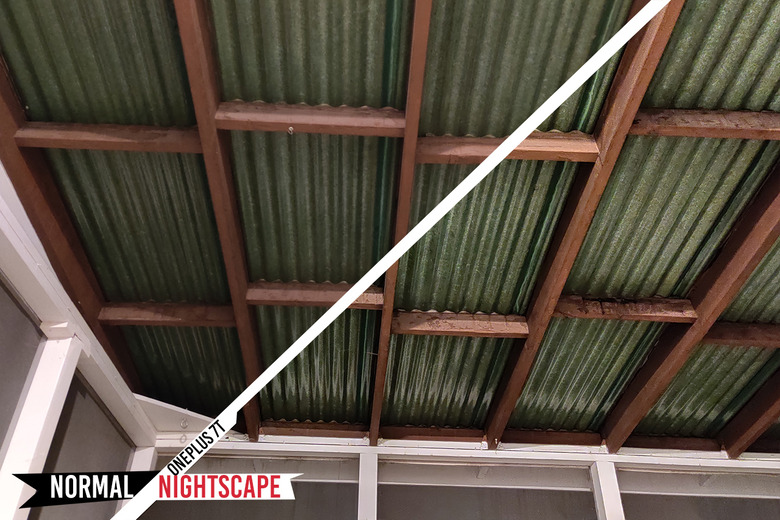
Above you'll see an example of the sometimes-subtle, sometimes-major improvements that are made with the OnePlus 7T's implementation of "Nightscape" – AKA intelligently-mixed long-exposure photography without the aid of a tripod. Below you'll see another example of a Nightscape photo captured with the OnePlus 7T near a restaurant with neon lights in the dark evening.
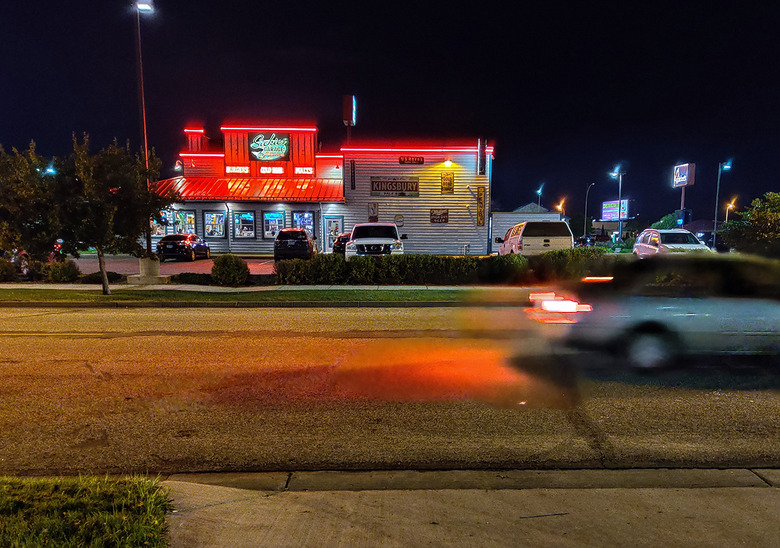
The main (48MP) sensor works with an f/1.6 aperture, while it's f/2.2 for the Telephoto lens and (also) f/2.2 for the Ultra Wide Angle lens. The Telephoto lens has a 12-megapixel sensor with 1.0um pixels, and the Ultra Wide Angle lens has a 16-megapixel sensor with a 117-degree field of view. The resulting setup – hardware and software – gives the OnePlus 7T the ability to take photos and video that are at least as good as the OnePlus 7 Pro – and in some cases better.
Above you'll see a collection of photos captured with the OnePlus 7T with the software available to the device at the time of this review's first publication date, September 25, 2019. Further additions with future software updates will be noted where applicable. Note that these photos have been resized to fit the reasonable size limits of the internet, but no other editing has taken place between photo capture and upload to the web. If anything, the process has only resulted in degradation of the quality of the photos from their original state.
OnePlus 7T Battery Life / Charge Speed
The OnePlus 7T has a 3800mAh battery with 30W fast charge capabilities. It's slightly smaller than the OnePlus 7 Pro (which has a 4000mAh battery) with the same charging speed and technology. Just so long as we're using the official OnePlus charger included in the box, we can charge at fairly extreme speed – from zero to well over 60% in approximately 30 minutes pretty regularly.
Much like the OnePlus 7 Pro, this 7T charges at what would appear to be the same speed regardless of whether the phone is in use. The device also stays relatively cool almost all of the time. It's difficult to make this phone get more than barely-noticeably warm with intense processing.
The charging brick hasn't changed from 7 Pro to 7T, but the optimization of said tech makes is possible to charge the 7T at a slightly faster rate. OnePlus suggests that the 7T can charge 23% faster than the OnePlus 7 Pro. Our tests suggest that the 7T is indeed faster – not necessarily in any major way faster, but faster nonetheless.
Design Identity Amplification
OnePlus is flying high right now on a series of victories with well-marketed phones and skilled public relations initiatives. OnePlus found a sweet spot and struck a balance between highest-end Android hardware and just-low-enough pricing. This sweet spot creates a value that goes toe-to-toe with every other Android-toting smartphone in the world today – and they know it. To make this point clear, they gave themselves a visual image kick-in-the-pants.
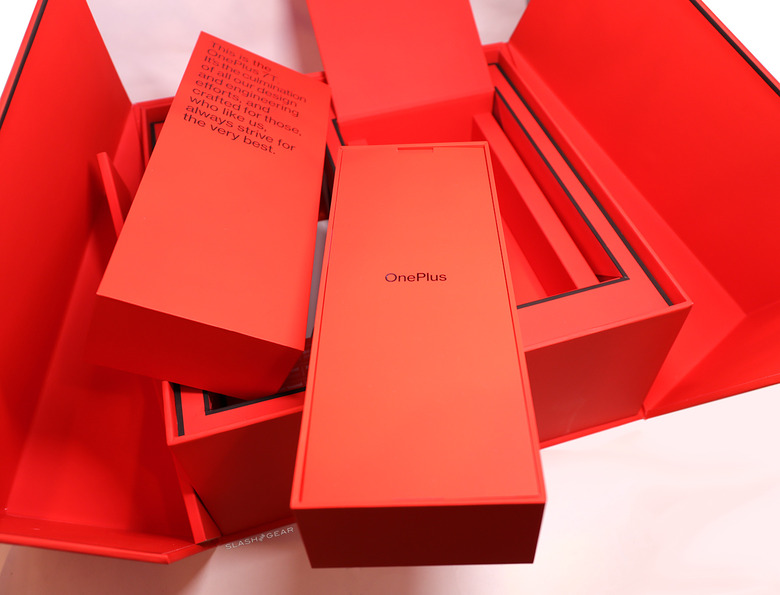
The OnePlus in-house design department took the time to get a full visual identity rebrand here in late 2019. This redesign (or "amplification of our visual look", as OnePlus put it) was headed by OnePlus Creative Director Mats Hakansson. His design direction is sleek, striking, and purposeful.
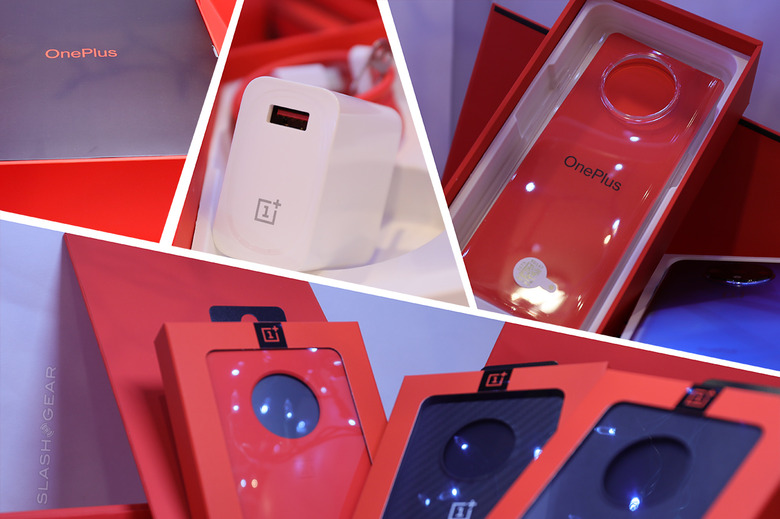
Dark Charcoal + Light Blue, a darker Blue, White, and OnePlus Red, plus the font "Neue Haas Grotesk" take center stage. The font is very, very similar to Helvetica, but is actually a 2010 "restoration" of the original pre-digital Helvetica – which was also called Neue Haas Grotesk. It's new, it's cool, it's a smart move on the company's pathway to new growth.
Wrap-up / Verdict
The OnePlus 7T is the best value OnePlus smartphone yet, as it should be. Also take a peek at our OnePlus 7 Pro Review to see the other major release in the USA from this company in 2019.
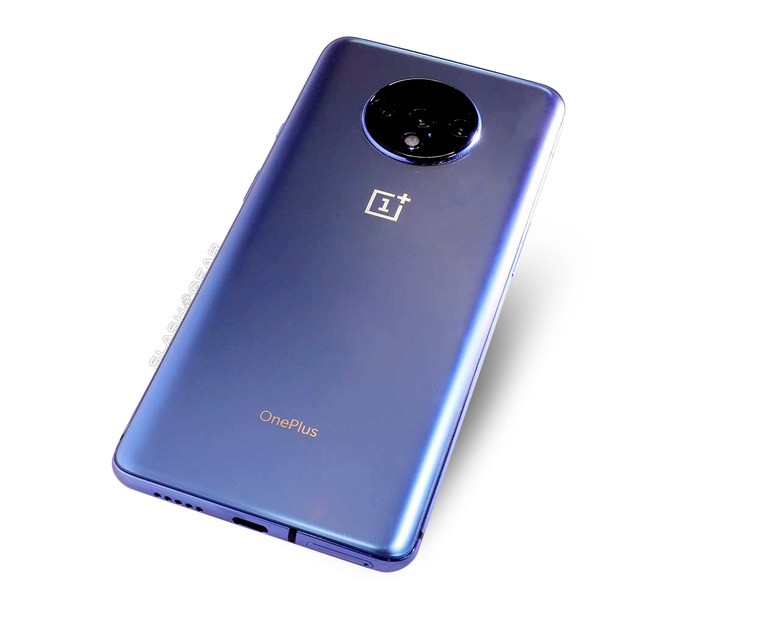
Do improvements from the 6T to the 7 mean the 6T is now no longer good? Of course not! It's still the scrappy fighter we experienced with our original OnePlus 6T Review from last year. Is the OnePlus 7T worth $50 (or more) than a brand new OnePlus 6T today? Yes, I think so – if only for the improved set of cameras. Each time OnePlus releases a new phone, they seem to improve their ability to implement the right set of features for the best possible value.
In the United States, the OnePlus 7T will be available in a single configuration from the OnePlus store online for approximately $599 USD on October 18, 2019. That'll include 128GB internal storage and 8GB LPDDR4X RAM. The OnePlus 7T will be available in two colors: "Glacier Blue" (as we've reviewed here) and "Frosted Silver." This phone will also be sold by T-Mobile USA.







